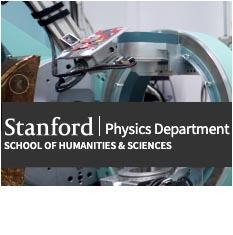
Applied Physics 483 Optics & Electronics Seminar: Principles and Applications of Resonator-Enhanced Electro-Optic Comb Generators*
Spilker 232
ABSTRACT: Recent advances in thin-film lithium niobate (TFLN) have enabled resonator-enhanced electro-optic (RE-EO) comb generators to emerge, after fifty years, as versatile tools for high-performance on-chip frequency comb generation. We explain the simple principles governing these devices based on microwave phase modulation inside single or coupled optical resonators. Combs fabricated in X-cut TFLN operating near 1600 nm have achieved comb spacings of tens of GHz, comb spans up to 15.4 THz, comb-generation efficiencies up to 30%, dual-comb generation within a single device, and programmable comb span and comb asymmetry. Reduced losses and resonator dispersion engineering should enable octave-spanning combs.
While RE-EO combs are promising for myriad applications, we will focus on using them as transmitter and local oscillator (LO) sources in multi-wavelength coherent optical communications. The phase noises in all comb lines are determined by only two parameters: the optical and microwave phase noises. These two parameters can be controlled via electrical feedback, so an LO comb can be phase-synchronized to a transmitter comb using only two optical phase-locked loops. We present the design of highly integrated 6.8 Tb/s comb-based links for interconnecting data centers over distances up to 30 km. We also compare mode-locked semiconductor lasers to RE-EO combs as sources in multi-wavelength links.
* This research is a collaboration with the Lončar group at Harvard and with L. A. Coldren at UCSB.
Biography: Joseph M. Kahn is a Professor of Electrical Engineering at Stanford University, where he leads the Optical Communications Group. He received a Ph.D. in Physics from University of California, Berkeley in 1986. In 1987-1990, Kahn was at AT&T Bell Laboratories, and in 1990-2003, he was on the Electrical Engineering and Computer Sciences faculty at Berkeley. His research contributions include: first successful synchronous (i.e., coherent) detection using semiconductor lasers (1989); first probabilistic shaping in optical communications (1999); founding of StrataLight Communications, market leader in first-generation phase-modulated fiber transmission systems (2000); first electronic compensation of fiber Kerr nonlinearity (2002), which led to digital backpropagation (2008); and elucidation of principal modes in multimode waveguides (2005), which led to the closed-form statistics of strongly coupled modal group delays and gains/losses in multimode systems (2011). Kahn received the National Science Foundation Presidential Young Investigator Award (1991) and is a Fellow of the IEEE (2000). He was listed in the Teaching Honor Roll of the Stanford Tau Beta Pi Society Chapter (2017-18) for creating the core EE course on signals and systems and received the Chair’s Award for Outstanding Contributions to Undergraduate Education (2020) for leading EE’s teaching efforts during the COVID-19 pandemic.
This seminar is sponsored by the Department of Applied Physics and the Ginzton Laboratory